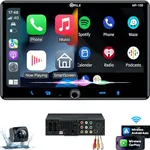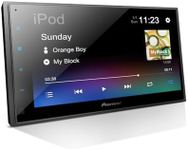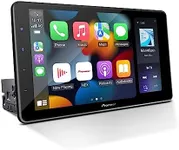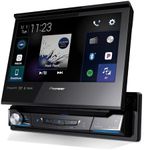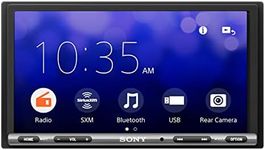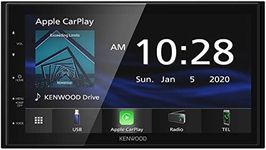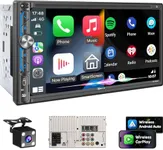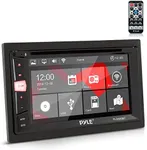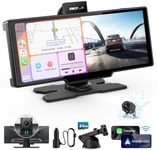Buying Guide for the Best Android Head Units
Choosing the right Android head unit for your car can significantly enhance your driving experience by providing better navigation, entertainment, and connectivity. To make an informed decision, it's important to understand the key specifications and features that matter most. Here's a guide to help you navigate through the essential specs and pick the best fit for your needs.Screen SizeScreen size refers to the diagonal measurement of the display. It's important because a larger screen can provide better visibility and easier interaction, especially for navigation and media controls. Screen sizes typically range from 6 to 10 inches. If you frequently use navigation or watch videos, a larger screen might be more suitable. However, ensure it fits well within your car's dashboard space.
ResolutionResolution indicates the number of pixels on the screen, affecting the clarity and sharpness of the display. Higher resolution means better image quality. Common resolutions include 800x480, 1024x600, and 1280x720. If you want crisp visuals for maps and media, opt for a higher resolution. For basic use, a lower resolution might suffice.
Operating System VersionThe operating system version determines the software features and compatibility with apps. Newer versions of Android offer better performance, security, and access to the latest apps. Versions range from Android 6.0 to the latest available. Choose a head unit with a recent OS version to ensure smooth operation and future-proofing.
ProcessorThe processor is the brain of the head unit, affecting its speed and responsiveness. Common processors include dual-core, quad-core, and octa-core. More cores generally mean better multitasking and faster performance. If you plan to use multiple apps simultaneously or require quick responses, opt for a quad-core or octa-core processor.
RAMRAM (Random Access Memory) impacts the head unit's ability to handle multiple tasks at once. More RAM means smoother performance and less lag. Typical options range from 1GB to 4GB. For basic navigation and media playback, 1GB might be sufficient. For more demanding use, such as running multiple apps, consider 2GB or more.
StorageStorage capacity determines how much data and apps you can store on the head unit. Options usually range from 16GB to 64GB. If you plan to store a lot of music, videos, or apps, opt for higher storage. For basic use, lower storage might be adequate, but ensure it supports external storage options like SD cards.
ConnectivityConnectivity features include Bluetooth, Wi-Fi, and USB ports, which are essential for pairing with your phone, accessing the internet, and connecting external devices. Ensure the head unit has Bluetooth for hands-free calling and audio streaming, Wi-Fi for internet access, and USB ports for charging and data transfer. If you use multiple devices, check for multiple connectivity options.
GPS NavigationGPS navigation is crucial for providing accurate directions and real-time traffic updates. Some head units come with built-in GPS, while others rely on your smartphone's GPS. If you frequently travel to unfamiliar places, a head unit with built-in GPS can be more reliable. Ensure it supports offline maps for areas with poor signal.
Audio QualityAudio quality is important for enjoying music and making clear phone calls. Look for features like equalizers, preamp outputs, and support for high-quality audio formats. If you're an audiophile or frequently use your car for entertainment, prioritize head units with advanced audio features. Basic users might be satisfied with standard audio quality.
User InterfaceThe user interface affects how easy it is to navigate and use the head unit. Look for intuitive and responsive interfaces with customizable options. If you prefer simplicity, choose a head unit with a straightforward interface. For tech-savvy users, advanced customization and features might be more appealing.
